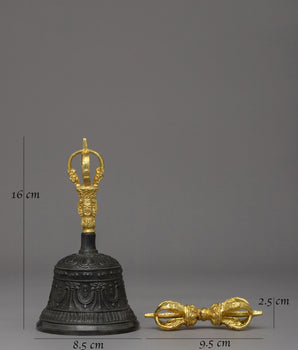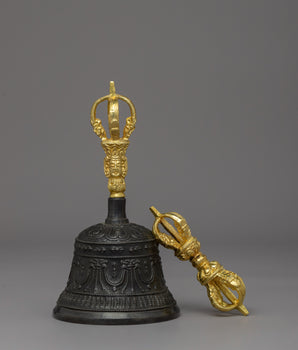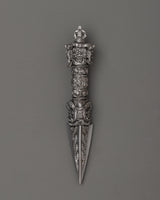
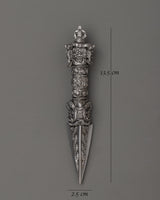
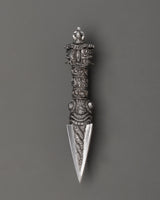
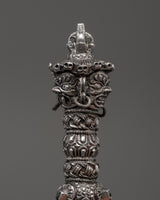
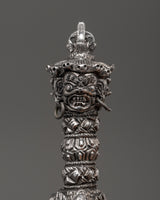
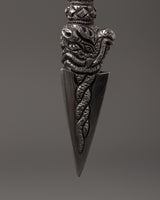
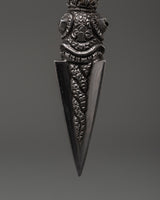
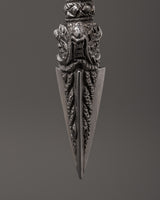
Tibetan Iron Phurba Dagger | Tibetan Buddhist Spiritual Tool

100% AUTHENTIC

HANDMADE

FREE SHIPPING
Tibetan Iron Phurba Dagger | Three-Sided Dagger for Spiritual Protection
--------------------------------------------
Size: 13.5cm (Height) x 2.5cm (Width)
Weight: 0.14kg
Materials: Iron Body
--------------------------------------------
About The Ritual Item :
This Iron Phurba Dagger is a traditional Tibetan ceremonial instrument made of iron and is 13.5 cm in height and 2.5 cm in width. It weighs 0.14 kilogram. This artwork, which is both compact and strong, is ideal for meditation rooms, altars, and ceremonial rituals. Its sharp triple-blade shape and delicate carvings evoke the strong compassion and protective spirit of Vajrakilaya, the deity often associated with the Phurba.
In Tibetan Buddhism, the Phurba (or Kila) is a spiritual tool to cut through negative energy, ego, and spiritual obstacles. Its three-sided blade represents the transformation of the body, speech, and mind, while the top depicts wrathful deities or vajra motifs, which signify indestructibility and divine strength. It is thought to be used in ceremonies to eliminate evil spirits, purify space, and guard sacred boundaries.
This iron Phurba is more than simply a symbol; it is a potent protection and energy anchor for Vajrayana practitioners and anybody looking for a sacred object of protection and change. Whether used in ritual, on a spiritual altar, or as a meaningful gift, it is a powerful reminder of strength, focus, and overcoming internal and external negativity.
Introduction To The Phurba :
The ceremonial dagger (Sanskrit: Kila; Tibetan: phurba) is essential for expelling evil and is considered especially effective in neutralizing the forces obstructing Tantric Buddhist practice. It has ancient origins, first appearing in the Indian Rg Veda as the core blade of the vajra used by Indra to destroy the primordial cosmic snake Vritra. Kila, a peg or stake in Sanskrit, was most likely associated with Vedic sacrifices. Meditation on the Vajrakila Tantra, an early Indian scripture first promoted in Tibet in the eighth century by Padmasambhava, one of the founding teachers of Tibetan Buddhism, is used to invoke the three-headed Vajrakila Buddha.
How to set up your own Buddhist Shrine?
Find a clean, quiet, and uncluttered spot
Set up an altar table, and cover it with an altar cloth that calls to you
Place your sacred item (statue, thangka, or a picture of Buddha) at the center

















